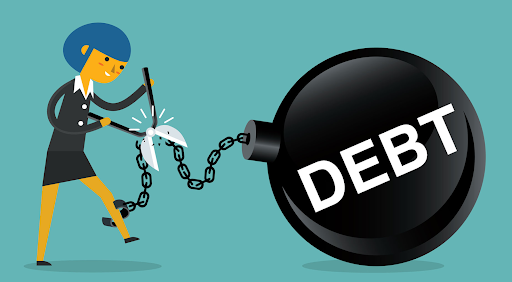In the dynamic landscape of personal finance management, finding ways to stretch your dollar further is always a top priority. For many U.S. households, expenses can feel like a relentless tide, making it challenging to save money, pay down debt, or invest for the future. The good news is that with a strategic approach, you can significantly cut household expenses and unlock more cash for your financial goals.
As of mid-2025, the average U.S. household’s monthly expenses are estimated around $6,440, with housing being the largest component at about $2,120 per month. But beyond these big-ticket items, there are numerous opportunities to save smartly. This article will provide actionable strategies for U.S. residents to reduce spending across various categories, putting more money back in your pocket.
1. Conquer Your Food Bill: Eat Smart, Save Big
Food is a significant variable expense for most U.S. households. The average American spends a considerable portion of their budget on groceries and dining out.
- Meal Planning is Your Secret Weapon: Before you even step foot in a grocery store, plan your meals for the week. This helps you create a targeted shopping list, preventing impulse buys and reducing food waste.
- Shop with a List (and Stick to It!): Once your meal plan is set, write a detailed grocery list and make a firm commitment to buy only what’s on it.
- Cook at Home More Often: Dining out or ordering takeout comes with a hefty premium. Preparing meals at home is almost always cheaper. Pack your lunches for work.
- Buy Store Brands: Don’t shy away from generic or store-brand products. For many staples, they offer comparable quality at a lower price.
- Utilize Coupons and Loyalty Programs: Check weekly circulars, store apps, and websites like coupons.com for digital and printable coupons. Join your grocery store’s loyalty program for exclusive discounts and rewards.
- Avoid Shopping Hungry: Shopping on an empty stomach can lead to impulsive and unnecessary purchases.
- Buy In-Season Produce: Fruits and vegetables are typically cheaper and fresher when they are in season.

- Consider Bulk Buying (Wisely): For non-perishable items or things you use frequently (e.g., paper towels, toilet paper, certain pantry staples), buying in bulk from warehouse clubs like Costco or Sam’s Club can offer significant savings. Just ensure you have storage space and will use the items before they expire.
2. Tame Your Utility Bills: Go Green, Save Green
Utilities are a recurring household expense, with the average U.S. household spending around $469 per month on electricity, gas, water, and internet/cable. Small changes can lead to big savings here.
- Optimize Thermostat Settings: The U.S. Department of Energy suggests you can save up to 10% on heating and cooling costs by adjusting your thermostat by 7-10 degrees Fahrenheit for 8 hours a day (e.g., when you’re at work or sleeping). In summer, raise it; in winter, lower it. Consider a smart thermostat for automation.
- Seal Leaks and Improve Insulation: Drafts from windows, doors, and insufficient insulation can cause energy loss. Seal gaps with caulk or weatherstripping. Proper insulation can save up to 15% on heating and cooling annually.
- Unplug “Energy Vampires”: Electronics plugged in still draw power even when turned off (phantom load). Use power strips for entertainment centers and computer setups, and flip them off when not in use.
- Upgrade to Energy-Efficient Appliances: When it’s time to replace old appliances, look for ENERGY STAR® certified models, which are designed to use less energy.
- LED Lighting: Switch out old incandescent bulbs for energy-efficient LED bulbs. They last longer and use significantly less electricity.
- Adjust Water Heater Temperature: Lower your water heater’s temperature to 120°F. For every 10-degree reduction, you can save 3-5% on water heating costs.

- Mindful Laundry Habits: Wash clothes in cold water when possible and always run full loads. Clean your dryer’s lint trap after every use for efficiency and safety.
3. Streamline Your Subscriptions & Entertainment: Cut the Cord, Not the Fun
With the proliferation of streaming services, it’s easy to accumulate monthly fees that silently drain your budget. In January 2025, the average monthly streaming bill was around $73.47, while unbundled cable TV was $121.86.
- Audit Your Subscriptions: Review all your recurring subscriptions (streaming services, apps, gym memberships, etc.). Cancel anything you don’t use regularly or find truly valuable. Many budgeting apps can help identify these.
- Rotate Streaming Services: Instead of subscribing to five different streaming platforms simultaneously, pick one or two for a month, binge-watch your favorites, then cancel and switch to another.
- Negotiate Cable/Internet Bills: Call your provider and ask for a lower rate. They often have unadvertised promotions or may offer a discount to keep you as a customer, especially if you mention competitor offers. As of February 2025, the average unbundled wired internet bill was about $83.35.
- Consider Bundling (Carefully): While often advertised as savings, ensure a bundle truly offers value compared to individual services. Sometimes unbundling and finding separate deals can be cheaper.
4. Optimize Your Communication: Smart Phones, Smart Savings
Cell phone bills are another substantial monthly expense. In 2025, the average monthly cell phone bill for a single line is estimated between $70-$100, and family plans from $160-$200.
- Review Your Data Usage: Are you paying for unlimited data when you only use a few gigabytes? Switch to a lower data plan if it fits your actual usage.
- Explore MVNOs (Mobile Virtual Network Operators): Companies like Mint Mobile, Visible, or Google Fi use the major carriers’ networks but offer much cheaper plans. You can often get unlimited talk, text, and data for significantly less.
- Negotiate Your Current Plan: Call your provider and see if they can offer a better deal or if you can switch to a cheaper plan they offer.
- Family Plans: If you have multiple lines, ensure you’re on the most cost-effective family plan for your usage. Mixing and matching data tiers within a family plan can also save money.
5. Review Your Insurance Policies: Shop Around Annually
Insurance premiums for auto, home, and health can be substantial.
- Shop Around: Get quotes from multiple insurance providers annually. Rates can vary significantly between companies for the same coverage.
- Increase Your Deductible: A higher deductible means lower monthly premiums. Just ensure you have enough in your emergency fund to cover the deductible if you need to make a claim.
- Bundle Policies: Many insurers offer discounts if you bundle multiple policies (e.g., auto and home insurance).
- Ask for Discounts: Inquire about discounts for good driving, home security systems, low mileage, professional affiliations, or being a long-term customer.
Conclusion
Successfully cutting household expenses isn’t about deprivation; it’s about making conscious, informed choices that align with your financial goals. By systematically analyzing your spending on food, utilities, entertainment, communication, and insurance, U.S. residents can uncover significant opportunities for smart money savings.
The average American household faces substantial monthly outlays, but with a disciplined approach, you can reclaim a portion of that money to boost your emergency fund, pay down debt faster, or accelerate your investments. Start by tracking your expenses, then tackle one category at a time. Every dollar saved is a step closer to financial freedom and a more secure future.










